VW ID.4 vs Volvo XC40 – Differences & prices compared
Compare performance, boot space, consumption and price in one view.
Find out now: which car is the better choice for you – VW ID.4 or Volvo XC40?
The VW ID.4 (SUV) comes with a Electric engine and Automatic transmission. In comparison, the Volvo XC40 (SUV) features a Petrol MHEV engine with Automatic transmission.
When it comes to boot capacity, the VW ID.4 offers 543 L, while the Volvo XC40 provides 452 L – depending on how much space you need. If you’re looking for more power, decide whether the 340 HP of the VW ID.4 or the 197 HP of the Volvo XC40 suits your needs better.
In terms of consumption, the values are 15.80 kWh per 100 km for the VW ID.4, and 6.50 L for the Volvo XC40.
Price-wise, the VW ID.4 starts at 34600 £, while the Volvo XC40 is available from 36400 £. Compare all the details and find out which model fits your lifestyle best!
The Volvo XC40 and VW ID.4 represent compelling choices in the compact SUV segment, each offering distinct appeals. The XC40, with its sleek Scandinavian design and robust safety features, is ideal for those valuing luxury and security. Meanwhile, the ID.4 shines with its emphasis on sustainability and state-of-the-art electric performance, catering to eco-conscious drivers seeking advanced technology in a practical package.
VW ID.4 Video
VW ID.4
The VW ID.4 represents Volkswagen's commitment to the electric vehicle market, combining contemporary design with sustainability. Its spacious interior and intuitive technology make it an attractive choice for those seeking comfort and innovation in an eco-friendly package. With a focus on electric performance and practicality, this car is set to be a popular option among environmentally-conscious drivers.
details @ Volkswagen
@ Volkswagen
 @ Volkswagen
@ Volkswagen
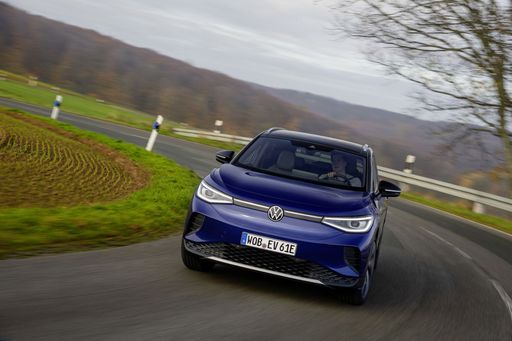 @ Volkswagen
@ Volkswagen
 @ Volkswagen
@ Volkswagen
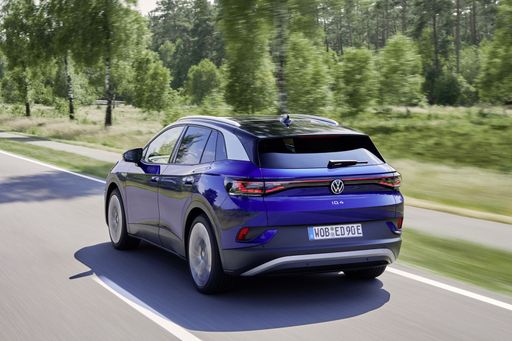 @ Volkswagen
@ Volkswagen
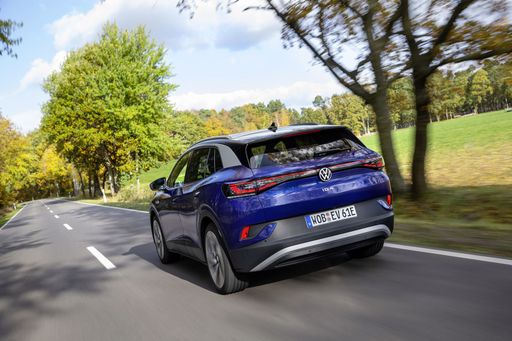 @ Volkswagen
@ Volkswagen
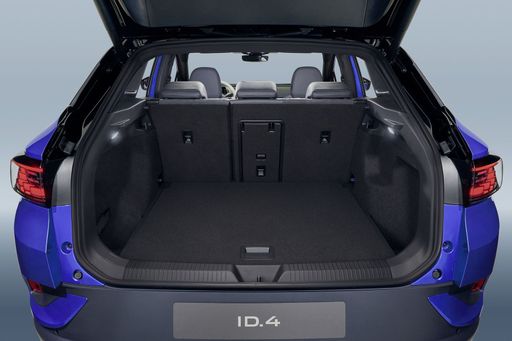 @ Volkswagen
@ Volkswagen
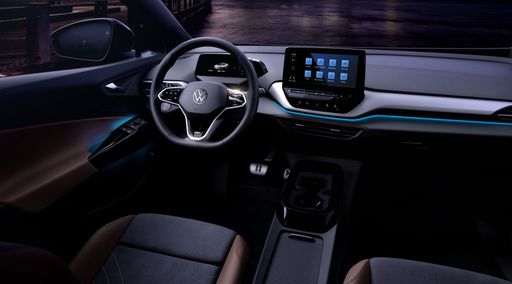 @ Volkswagen
@ Volkswagen
Volvo XC40
The Volvo XC40 is a standout model in the compact SUV segment, offering a delightful blend of Scandinavian design and practicality. Its interior is both stylish and functional, featuring premium materials and innovative storage solutions that make every journey comfortable. The car's performance is smooth and responsive, with advanced safety features ensuring peace of mind for drivers and passengers alike.
details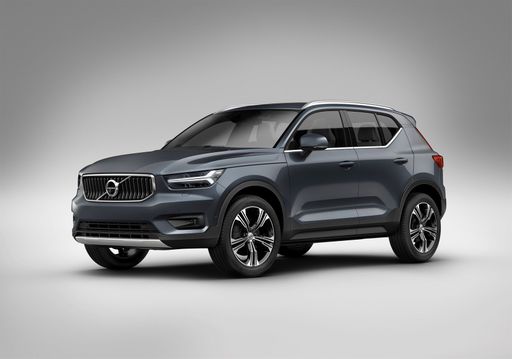 @ media.volvocars.com
@ media.volvocars.com
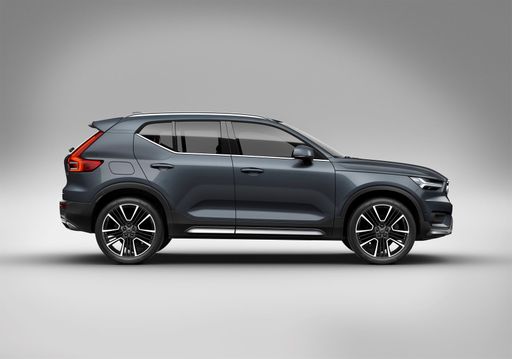 @ media.volvocars.com
@ media.volvocars.com
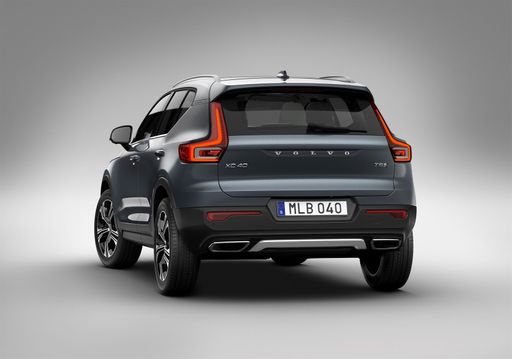 @ media.volvocars.com
@ media.volvocars.com
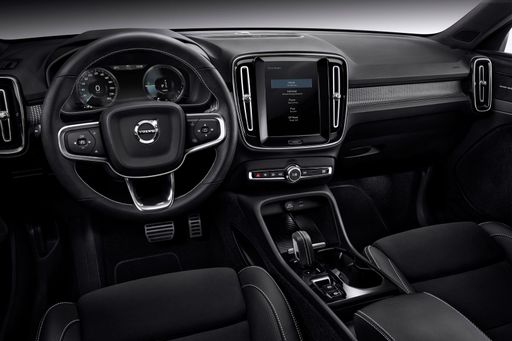 @ media.volvocars.com
@ media.volvocars.com
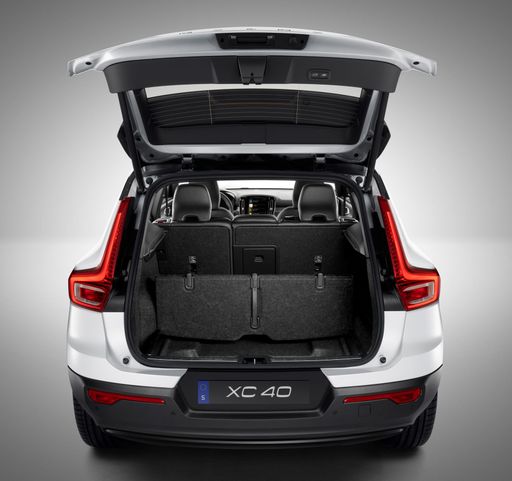 @ media.volvocars.com
@ media.volvocars.com
Volvo XC40 vs. VW ID.4: The Ultimate SUV Showdown
The 2024 automotive market is rife with innovative SUVs, and two standout contenders are the Volvo XC40 and the VW ID.4. Each caters to a distinct audience with its unique technology, performance, and design. Let's delve into the specifics and see how these SUVs compare.
Power and Performance
The Volvo XC40 makes its mark with a Petrol Mild Hybrid Engine (MHEV) that comes in two power outputs: 163 HP and 197 HP. Matched with a dual-clutch automatic transmission and a front-wheel-drive system, the XC40 reaches 0-100 km/h in 8.6 seconds (for the 163 HP variant) to 7.6 seconds (with 197 HP). It boasts a maximum speed of 180 km/h and a torque that ranges from 265 Nm to 300 Nm. The engine's 1969 cm3 capacity and consumption of 6.5 L/100km offer a balanced performance for eco-conscious drivers.
In contrast, the VW ID.4 is an all-electric marvel. Depending on the variant, power ranges from 170 HP to 340 HP. As an electric vehicle, it provides instantaneous torque, varying from 310 Nm to a notable 679 Nm for sure-footed performance. The ID.4 reaches 0-100 km/h in an exhilarating 5.4 seconds to a more measured 9.0 seconds, with a top speed fluctuating between 160 km/h and 180 km/h. Arguably, the ID.4's electric range is a highlight, stretching up to 572 km on a single charge.
Dimensions and Design
Both SUVs comfortably seat five passengers and offer ample cargo space. The Volvo XC40 features a trunk capacity of 452 L within its compact structure measuring 4425 mm in length, 1863 mm in width, and 1652 mm in height. This design complements its curb weight of 1688 kg, offering a balanced ride and reasonable payload capacity of 532 kg.
Meanwhile, the VW ID.4 is slightly larger at 4584 mm in length and provides more cargo capacity with its 543 L trunk. Despite its larger dimensions, the ID.4's sleek design ensures a competitive curb weight ranging from 1979 kg to 2261 kg, depending on the model. With a payload capacity nearing 541 kg, it's well-suited for larger families or those needing extra utility.
Efficiency and Innovation
The Volvo XC40's CO2 emissions are measured between 147 g/km and 148 g/km, placing it in the CO2 Efficiency Class E. Its hybrid technology aims to balance fuel efficiency with traditional power.
The VW ID.4 takes the lead in eco-credentials with zero tailpipe emissions, falling into the top tier CO2 Efficiency Class A. The efficiency of the ID.4's battery system, varying from 52 kWh to 77 kWh, achieves a consumption as low as 15.8 kWh/100 km, illustrating VW's commitment to sustainable technology.
Choosing Your SUV
The choice between the Volvo XC40 and the VW ID.4 hinges on personal preferences and priorities. The XC40 is ideal for those who appreciate the familiarity of a petrol engine with a hybrid twist, delivering solid performance and a stylish design. Conversely, the VW ID.4 caters to forward-thinking drivers seeking an electric vehicle that combines range, power, and eco-friendliness in a modern package.
In the end, both SUVs represent the future of automotive innovation — whether through hybrid capabilities or all-electric powertrains. Your decision ultimately comes down to whether you prefer a petrol hybrid or quintessentially electric drive.

|

|
|
|
|
Costs and Consumption |
|
|---|---|
|
Price
34600 - 47200 £
|
Price
36400 - 47200 £
|
|
Consumption L/100km
-
|
Consumption L/100km
6.50 L
|
|
Consumption kWh/100km
15.8 - 17 kWh
|
Consumption kWh/100km
-
|
|
Electric Range
356 - 572 km
|
Electric Range
-
|
|
Battery Capacity
52 - 77 kWh
|
Battery Capacity
-
|
|
co2
0 g/km
|
co2
147 - 148 g/km
|
|
Fuel tank capacity
-
|
Fuel tank capacity
54 L
|
Dimensions and Body |
|
|---|---|
|
Body Type
SUV
|
Body Type
SUV
|
|
Seats
5
|
Seats
5
|
|
Doors
5
|
Doors
5
|
|
Curb weight
1975 - 2261 kg
|
Curb weight
1688 kg
|
|
Trunk capacity
543 L
|
Trunk capacity
452 L
|
|
Length
4582 - 4584 mm
|
Length
4425 mm
|
|
Width
1852 mm
|
Width
1863 mm
|
|
Height
1619 - 1634 mm
|
Height
1652 mm
|
|
Payload
509 - 551 kg
|
Payload
532 kg
|
Engine and Performance |
|
|---|---|
|
Engine Type
Electric
|
Engine Type
Petrol MHEV
|
|
Transmission
Automatic
|
Transmission
Automatic
|
|
Transmission Detail
Reduction Gearbox
|
Transmission Detail
Dual-Clutch Automatic
|
|
Drive Type
Rear-Wheel Drive, All-Wheel Drive
|
Drive Type
Front-Wheel Drive
|
|
Power HP
170 - 340 HP
|
Power HP
163 - 197 HP
|
|
Acceleration 0-100km/h
5.4 - 9 s
|
Acceleration 0-100km/h
7.6 - 8.6 s
|
|
Max Speed
160 - 180 km/h
|
Max Speed
180 km/h
|
|
Torque
310 - 679 Nm
|
Torque
265 - 300 Nm
|
|
Number of Cylinders
-
|
Number of Cylinders
4
|
|
Power kW
125 - 250 kW
|
Power kW
120 - 145 kW
|
|
Engine capacity
-
|
Engine capacity
1969 cm3
|
General |
|
|---|---|
|
Model Year
2023 - 2025
|
Model Year
2024
|
|
CO2 Efficiency Class
A
|
CO2 Efficiency Class
E
|
|
Brand
VW
|
Brand
Volvo
|
VW ID.4
The VW ID.4: A Leap into the Electric Era
As electric vehicles steadily capture the automotive market, the Volkswagen ID.4 stands as a testament to impressive innovation and functionality. Combining eco-friendly technology with the practicality of an SUV, the VW ID.4 is designed to appeal to both environmentally conscious drivers and those seeking versatility in their vehicle choice. In this article, we'll explore the significant technical features and innovations that make the ID.4 a remarkable option in the electric vehicle market.
Powertrain Options: Efficiency Meets Performance
The Volkswagen ID.4 offers a range of powertrain options to suit various driving preferences. With power outputs ranging from 170 to 340 PS and torque figures between 310 and 679 Nm, the ID.4 provides a versatile driving experience. Whether you opt for the responsive rear-wheel drive or the enhanced stability of the all-wheel-drive configuration, each model guarantees smooth and efficient performance.
With an emphasis on efficiency, the ID.4 boasts a consumption rate between 15.8 and 16.8 kWh/100km, making it an economical choice for those mindful of their energy usage. Furthermore, the ID.4 offers a robust driving range, with potential distances reaching up to 572 km, reducing the need for frequent recharging and allowing for longer journeys with peace of mind.
Charging and Battery Technology
Efficiency isn't the only strong suit of the ID.4—the battery technology is equally impressive. With a battery capacity ranging from 52 to 77 kWh, Volkswagen ensures that drivers can match their vehicle choice to their lifestyle needs. Charging is straightforward and adaptable, providing convenience whether at home or on the move.
The ID.4 is designed for compatibility with a variety of charging infrastructure, ensuring rapid charging times and minimal downtime. This thoughtful engineering ensures that drivers spend more time on the road and less time waiting at charging stations.
Design and Practicality: An SUV with a Mission
The VW ID.4 embraces its SUV heritage, offering ample interior space and practicality without compromising on style. With its dimensions ranging from 4582 to 4584 mm in length, 1852 mm in width, and up to 1634 mm in height, the ID.4 ensures a comfortable and spacious environment for up to five passengers.
Additionally, the ID.4 provides a generous boot space of 543 litres, making it ideal for families or those with an active lifestyle requiring extra storage. The careful consideration in design extends to weight efficiency, with the vehicle's own weight between 1979 and 2261 kg helping to enhance its overall drive dynamics and efficiency.
Innovative Features and Technology
Volkswagen has equipped the ID.4 with a suite of advanced technological features designed to enhance both safety and driving enjoyment. These features include intuitive infotainment systems, driver-assistance technologies, and connectivity options tailored to modern expectations.
One standout attribute of the ID.4 is its commitment to sustainability with a CO2 efficiency class of A, demonstrating Volkswagen's dedication to reducing environmental impact without sacrificing performance or functionality.
Conclusion: The Future is Electric
The VW ID.4 is a shining example of how traditional automotive excellence adapts to contemporary demands for sustainability and efficiency. Whether you are an enthusiastic early adopter of electric vehicles or simply someone in search of a reliable and advanced SUV, the ID.4 offers a compelling package designed for the future.
For anyone ready to embrace the electric revolution, the Volkswagen ID.4 represents a significant step forward—a combination of forward-thinking technology, efficient design, and an emphasis on practicality. This makes the ID.4 a worthy consideration for any discerning driver looking to invest in their next vehicle.
Volvo XC40
Introduction: The Refined Volvo XC40
The Volvo XC40 is a testament to Swedish innovation and design, blending practicality with cutting-edge technology in the compact SUV segment. Aimed at drivers who value safety, comfort, and eco-conscious driving, the XC40 continues to uphold Volvo's reputation for engineering excellence. In this article, we'll explore the technical specifications and innovative features that make the XC40 a standout choice for modern drivers.
Power and Performance
Under the bonnet, the Volvo XC40 offers a range of mild-hybrid petrol engines, combining efficiency with a responsive driving experience. The power output ranges from 163 to 197 PS (120 to 145 kW), ensuring robust performance for both urban commuting and longer journeys. With a maximum torque of 265 to 300 Nm, the vehicle offers smooth acceleration, achieving 0-100 km/h in just 7.6 to 8.6 seconds, whilst maintaining a CO2 efficiency class of E.
Efficiency Meets Eco-Conscious Design
The mild-hybrid system in the XC40 effectively reduces fuel consumption, with an impressive average of 6.5 L/100km. The system recycles braking energy to charge the battery, reducing emissions to between 147-148 g/km without compromising on performance. This design aligns perfectly with Volvo's commitment to sustainable motoring.
Cutting-Edge Transmission
The XC40 is equipped with an advanced automatic dual-clutch transmission that seamlessly transitions through gears, enhancing both fuel efficiency and driving comfort. The integration of this technology underscores Volvo’s commitment to delivering an engaging yet smooth driving experience.
Sophisticated Interior Design
The interior of the XC40 reflects Volvo’s dedication to Scandinavian design aesthetics, featuring a spacious cabin with high-quality materials. The vehicle comfortably seats five passengers, with a versatile boot space of 452 litres, making it ideal for family outings or road trips. The intuitive infotainment system is seamlessly integrated, providing driver-friendly access to navigation, entertainment, and safety features.
Safety Innovations
Volvo’s renowned safety reputation is evident in the XC40’s comprehensive suite of safety features. Advanced driver assistance systems, including adaptive cruise control, blind-spot monitoring, and lane-keeping aid, ensure a secure driving environment. The XC40’s construction and technology adhere to Volvo's “Vision 2020” strategy, aiming for zero fatalities or serious injuries in new Volvo cars.
Conclusion: A Contemporary Choice
The Volvo XC40 stands out as a compact SUV that blends innovation, efficiency, and style. Its proactive approach to hybrid technology, coupled with Volvo’s trademark focus on safety and design, makes it a compelling choice for those seeking a blend of practicality and performance. Whether it’s the daily commute or a weekend getaway, the XC40 is engineered to deliver a dynamic and sustainable driving experience.
Which drive types are available for the VW ID.4?
Available as Rear-Wheel Drive or All-Wheel Drive.
The prices and data displayed are estimates based on German list prices and may vary by country. This information is not legally binding.
